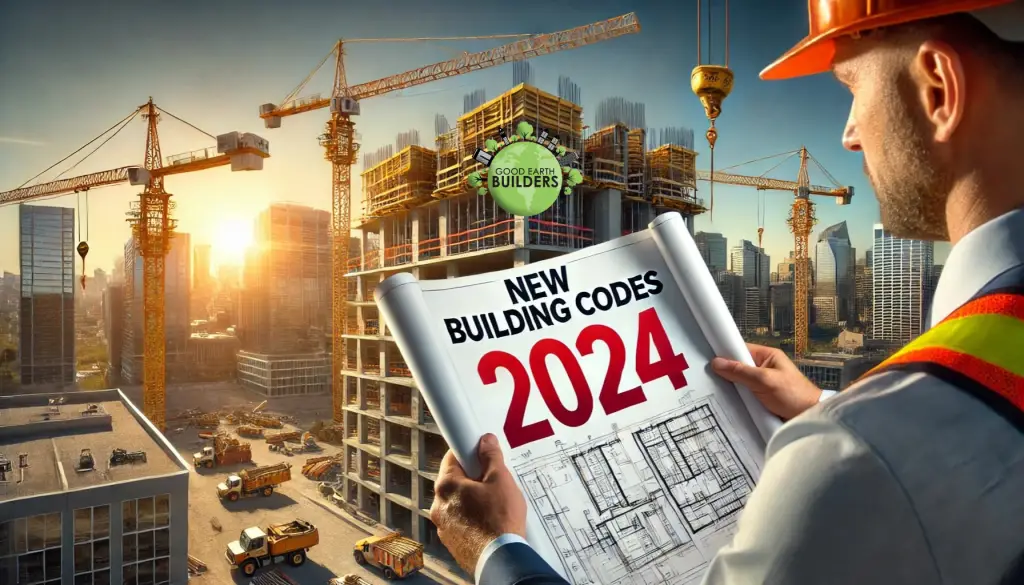Friday, October 3, 2025
Introduction: Beyond the Blueprint—The Custom Home as Legacy
A custom-built home is more than just a structure of wood, steel, and stone; it is the ultimate expression of personal vision, a sanctuary tailored to every nuance of your life, and, crucially, a generational investment. In a dynamic market like Calgary, where the skyline and neighbourhoods are constantly evolving, building custom provides a unique opportunity to create a legacy that standard homes simply cannot match. This guide, structured in six comprehensive phases, moves far beyond basic construction to detail the entire journey of realizing a true custom luxury home in the Calgary area. We will cover everything from the initial psychological preparation and trust-building with your partner to the granular details of value engineering, the critical role of technology, and the final, enduring protection of your investment. This is the definitive roadmap for the discerning Calgarian homeowner.
Phase 1: The Foundation of Trust and Vision (The Pre-Design and Psychological Commitment)
The most critical foundation is not concrete, but the relationship with your custom home builder and the alignment of your own expectations. This stage sets the emotional and financial trajectory for the entire project.
The Emotional and Psychological Journey: A Two-Year Commitment
Building a custom home is an intensive, multi-year process. While a production home might take 6-10 months, a true custom build in Calgary—from initial concept to key handover—will typically span 1.5 to 2 years. This extended timeline must be embraced upfront. The “construction phase” itself often takes 10-16 months, but the preceding Pre-Construction Phase (Design, Engineering, Permitting, and Approvals from the City of Calgary) often consumes 4-6 months alone.
Homeowners must prepare for:
- Decision Fatigue: Thousands of micro-decisions will be required, from faucet finishes to structural beam placement. A strong, communicative partnership with your builder is the buffer against this fatigue.
- Budget Fluctuations: Unforeseen site conditions (e.g., encountering unexpected bedrock or old utility lines during excavation) can impact costs. An ethical builder builds contingency into the budget and communicates these issues immediately.
- The Weather Factor: Calgary’s climate is notorious. Winter concrete pours, spring thaw delays, and mid-summer hail protection all impact scheduling. A prepared builder accounts for these seasonal challenges in their timeline, ensuring quality is never sacrificed for speed.
Selecting Your Builder: The Partnership over the Price Tag
In the custom market, the lowest bid is rarely the best value. The right builder is a partner, an expert fiduciary, and a quality control advocate.
Key Builder Evaluation Criteria:
- Transparency in Process: Demand to see a detailed, phased schedule (e.g., Gantt chart) and an open-book accounting policy. You should know precisely where every dollar is going, down to the trade invoice.
- Portfolio and Trade Stability: Assess the longevity of their relationships with trade partners (plumbers, electricians, framers). Long-term trade relationships are a strong indicator of a builder who pays fairly and on time, which translates directly to quality and efficiency on your site.
- Calgary Specific Experience: The builder must have deep knowledge of specific Calgary zoning bylaws, setback requirements, and the often-complex Inner-City Infill regulations if you are building in established areas like Altadore, Elbow Park, or Mount Royal.
Phase 2: Design Integration and The Art of Value Engineering
With the builder selected, the vision moves from a concept sketch to an engineered reality. This phase is defined by intense collaboration between the homeowner, the architect, and the builder.
The Blueprint Review: A Detailed Checklist
The most expensive place to make a change is in the field during construction. The cheapest is on paper. Before City permits are filed, a meticulous review is mandatory:
- Spatial and Furniture Planning: Are the electrical outlets exactly where the TV and couches will be? Are the dining room light fixtures centred over the future table, considering the room’s flow?
- HVAC and Venting Clearances: Ensure the mechanical closets and HVAC duct runs are optimized to minimize their visual impact (e.g., duct chases should be hidden in closets or dropped ceilings and not awkwardly spanning open-concept areas).
- Future-Proofing: Does the design allow for a future elevator installation without structural rework? Are conduits pre-run for solar panels or EV chargers? This is the definition of forward-thinking custom building.
Value Engineering (VE): Quality Preservation, Cost Optimization
Value Engineering is fundamentally not about cutting quality; it is about achieving the same aesthetic and functional result through smarter material and method selection. This must be a collaborative process rooted in the client’s priorities.
| High-Cost Component (Priority Item) | Value Engineered Alternative (Quality-Preserving Swap) | Impact |
| Foundation/Structure: Full structural steel beams throughout for an open floor plan. | Strategically replacing non-critical steel with engineered wood I-joists or Glulam beams. | Significant cost saving on material and complex installation labour while maintaining load-bearing performance. |
| Exterior Cladding: Full-coverage natural stone masonry across all facades. | Using natural stone masonry strategically on the front facade and key focal points, integrating it seamlessly with high-quality fibre cement siding or stucco on less-visible sides. | Drastic material and labour cost reduction without compromising the home’s street appeal. |
| Cabinetry: Fully custom-built cabinets (kitchen, all bathrooms, laundry) from high-end European supplier. | Custom millwork for the highly utilized kitchen only; using semi-custom (pre-fabricated box with custom door fronts) for secondary bathrooms and laundry. | Reduces the millwork budget, focusing the high-end investment where it is most valued (the kitchen). |
| Roofing: Complex, multi-pitch roof system with numerous valleys and dormers. | Simplifying the roofline (fewer corners and pitch changes) to reduce cutting/labour waste and minimize points of water vulnerability. | Improves long-term building envelope integrity while reducing materials/labour. |
Phase 3: Technical Specifications and Advanced Systems Integration
A luxury custom home is only as good as its unseen technical systems. In Calgary’s climate, these systems must be robust, efficient, and intelligently integrated.
Energy Efficiency and Building Envelope Excellence
Achieving superior energy performance requires more than just high-R value insulation; it demands a continuous, unbroken building envelope.
- Insulation Type: Beyond standard batt insulation, Calgary builders often specify spray foam insulation for rim joists, cantilevered areas, and attic spaces. This ensures an air-tight seal, drastically reducing thermal bridging and air leakage, which is critical for minimizing heating costs in cold winters.
- Fenestration (Windows & Doors): Triple-pane, low-emissivity (Low-E) windows are a baseline requirement for high-performance custom homes in Alberta. They minimize heat transfer and block UV radiation, protecting interior finishes.
- Mechanical Ventilation (HRV/ERV): Because the home is built so air-tight, a high-efficiency Heat Recovery Ventilator (HRV) or Energy Recovery Ventilator (ERV) system is mandatory. This system continuously exchanges stale indoor air with fresh outdoor air, pre-heating/pre-cooling it using the exhausted air’s thermal energy. This is vital for air quality and moisture control.
Acoustic Design: The Silent Luxury
True luxury includes auditory privacy. Acoustic dampening is a system, not a single product.
- Interior Wall Isolation: Using resilient channel or double-layer drywall on key walls (e.g., between the primary bedroom and an adjacent office, or between the theatre room and the living area) prevents sound transfer.
- Plumbing Noise: All plumbing stacks and drainage lines running through interior walls should be wrapped in sound-dampening insulation before the drywall is installed to eliminate the annoying sound of water running.
- HVAC Placement: Mechanical units should be isolated in mechanical rooms on vibration dampening pads, and ductwork should incorporate flexible connectors to prevent the transmission of mechanical noise throughout the home.
Phase 4: Construction and The Guardian of Quality (The Site Supervisor)
The physical build phase is where the vision is tested. The Site Supervisor’s role is the single most critical factor in ensuring the blueprint is translated with precision.
The Site Supervisor: Vision-Keeper and Problem-Solver
The Site Supervisor is your builder’s direct representative on the ground. They are the daily guardian of budget, schedule, and, most importantly, quality control. Their responsibilities extend far beyond scheduling trades:
- The Inter-Trade Coordinator: They ensure the plumber leaves room for the electrician, and the framer accounts for the future millwork. This proactive coordination prevents costly “clashes” that often lead to delays and compromises in the final product.
- Safety and Compliance Enforcer: The site must meet both provincial and municipal safety standards. The Site Supervisor is legally responsible for this compliance, protecting both the workers and the integrity of the project from costly City-imposed stop-work orders.
- The Homeowner’s Eyes: A good supervisor sends regular, often daily, photographic updates and proactively brings attention to issues, such as a material substitution needed due to supply chain delays, with a solution ready. This mitigates surprises.
The Calgary Inspection Regime
The City of Calgary’s Safety Codes Act mandates multiple inspections at critical stages. These are non-negotiable checkpoints that protect your investment:
- Foundation/Piles Inspection: Ensures the depth, width, and concrete composition are correct before the slab is poured—critical for Calgary’s variable soil conditions.
- Framing Inspection: Verifies structural load-bearing walls, headers, and bracing align precisely with the engineered drawings, often including fire-rated assembly checks.
- Insulation and Vapour Barrier Inspection (The Building Envelope Check): This is one of the most important inspections in a cold climate, ensuring continuous insulation and proper sealing before the drywall conceals everything. A failure here can lead to moisture, mould, and massive energy loss.
- Final Inspection: The final sign-off is required before the City issues the Occupancy Permit, confirming all safety, mechanical, and structural systems are compliant with the Alberta Building Code.
Phase 5: Closing and Legacy Management
The transfer of the custom home is not just a key exchange; it is the comprehensive handover of the entire home’s operating manual.
The Alberta New Home Warranty (1-2-5-10)
In Alberta, all new homes constructed by a licensed builder after February 1, 2014, must be covered by a home warranty, as mandated by the New Home Buyer Protection Act. This warranty is a crucial layer of long-term protection for your investment, offering a tiered structure:
- 1 Year: Labour and Materials (Defects in workmanship, flooring, trim, paint, cabinets).
- 2 Years: Delivery and Distribution Systems (Defects in electrical, plumbing, heating, ventilation, and air conditioning systems).
- 5 Years: Building Envelope Protection (The exterior shell, including the roof, exterior walls, and water penetration). Many quality builders opt to purchase an extended two years of coverage, moving this to a 7-Year Envelope.
- 10 Years: Major Structural Components (Foundation, load-bearing walls, and roof structure integrity).
A savvy homeowner will conduct a final, independent home inspection around the 11-month mark of the 1-Year coverage to catch and address any settling or minor issues while the builder is fully responsible.
The Home Legacy Document Handover
The final physical deliverable should be a meticulously organized digital and physical binder containing all the intellectual property of the home:
- As-Built Drawings: Finalized blueprints showing the true location of all walls, pipes, and electrical conduits.
- Service Manuals & Warranties: Manuals for all appliances, HVAC systems, smart home hubs, and water heaters.
- Finish Specifications: Specific paint codes (sheen and brand), stain colours, tile vendor and colour names, and spare flooring planks for future repairs. This documentation ensures the home can be maintained perfectly for decades.
Phase 6: Conclusion and Future-Proofing
The journey to your custom Calgary home culminates in the creation of a deeply personal, future-proofed asset. By focusing on a strong builder partnership, meticulous design integration (powered by Value Engineering), and a comprehensive quality control process that relies heavily on a dedicated Site Supervisor, the vision moves from an abstract dream to a tangible, enduring reality.
This level of commitment—to quality, transparency, and advanced technical systems—is what separates a custom house from a custom home legacy. It ensures your Calgary residence is not only the most beautiful home on the block but also a robust, efficient, and well-documented investment that will serve your family for generations.
The GEB Advantage: As you begin the process of selecting the ideal partner for this monumental undertaking, know that the groundwork laid here perfectly positions you to appreciate the meticulous quality and visionary approach offered by the industry’s most dedicated custom builders. The depth of detail in this guide mirrors the rigorous standards you should expect from your future partner.




